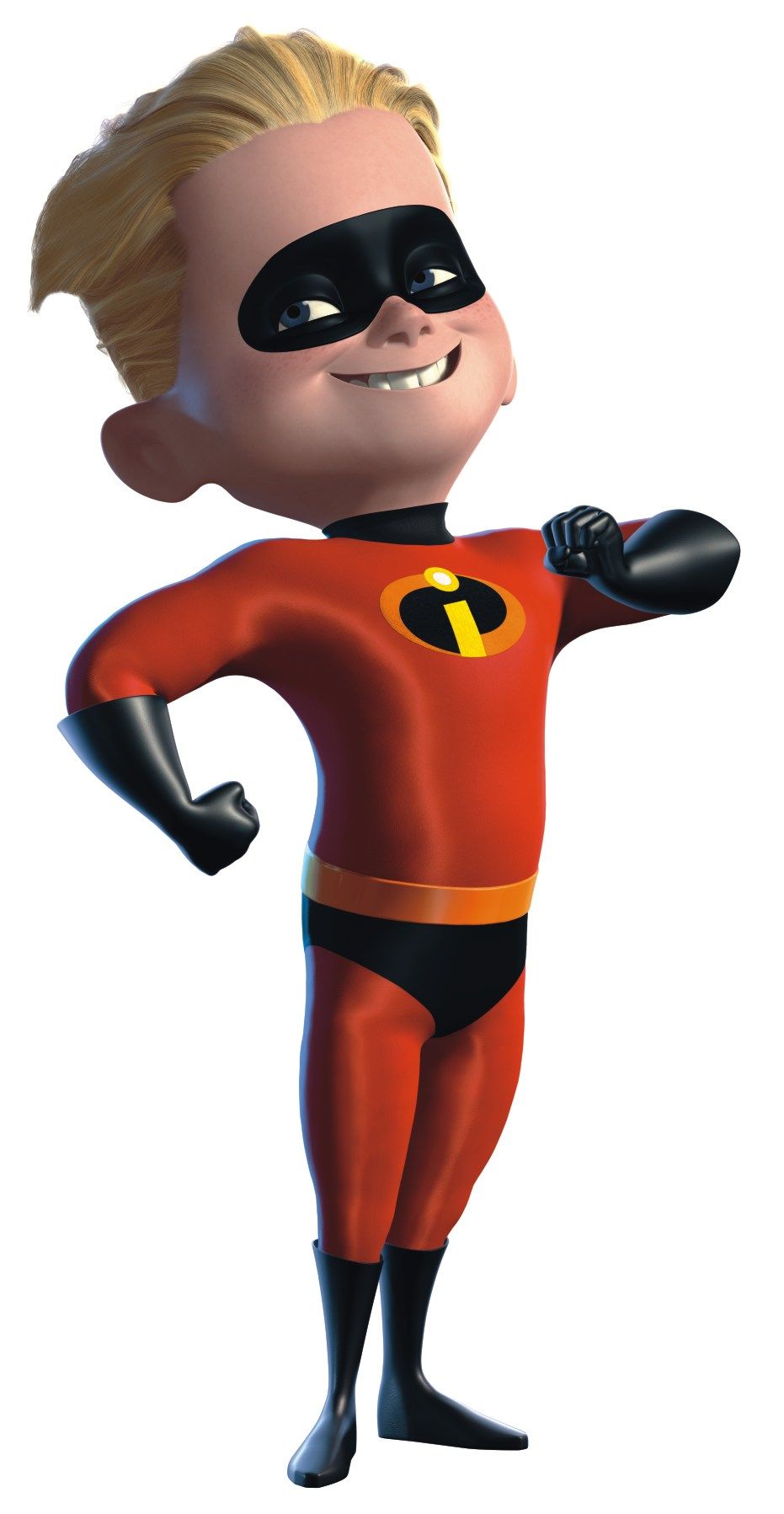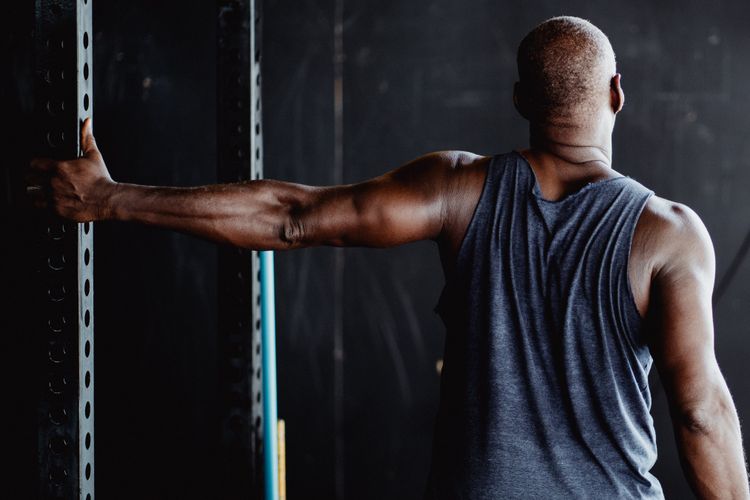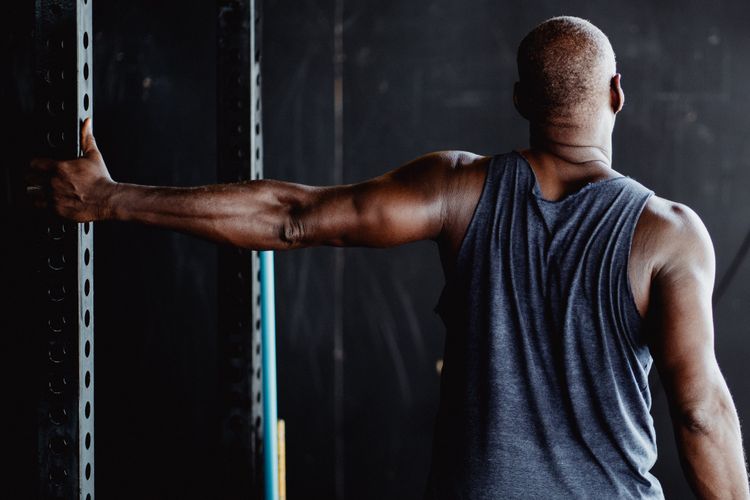Issue 36 King Crab Edition

This week we’re taking aim at one of the biggest trends in personal rehab. Massage guns. Are they a complete waste of money? I can’t tell you that. What I can tell you is how effective they are at increasing plantar flexors’ range of motion. Read on for that. After that, we’re breaking down a meta-analysis of motor control exercises compared to strengthening exercises for extremity MSK disorders. I slogged through a lot of data for you this week, so I hope you appreciate it.
If you do, please share with one person this week. Keep PT Crab going by keeping PT Crab growing.
With that, let’s dive in!
Massage Guns Are Like Stretching
The Gist - Researchers are piling in to assess the effectiveness of Theraguns, Hypervolts, and their ilk. We don’t have enough studies for a meta-analysis or anything yet, but we do have one controlled study to give us some information. They put two groups through two protocols (as you may expect). They all had their plantar flexion ROM checked, then one was 5 minutes of plantar flexor Hypervolt massage and the other was 5 minutes of just sittin’ there. Afterward, they compared the difference in plantar flexor ROM changes between the just sittin’ there folks and the get punched in the calf folks. Here’s what they found.
Maximum dorsiflexion range increased by 5.4° in the Hypervolt group and 1.6° in the just sittin’ theres. Yay! Without a reduction in plantar flexor strength. Yay! But hold on a second. These same researchers did a similar test of stretching vs. nothing back in 2017 and found that it increased dorsiflexion range by 4.9°. And it’s free. So there.
Tell Me More - Let’s talk about how the massage gun was applied. The researchers locked the legs of their participants into 0° knee flexion and 20° ankle plantar flexion, then put the gun to work on the medial calf, working their way down it, then restarting the process on the lateral side. This was done for 5 minutes with pressure that was as identical as possible by hand throughout. The control group sat in the same position and did nothin’.
Why do massagers like this work? Kinda the same reasons behind any fascial treatment. Fascia is thixotropic, it becomes more susceptible to shear forces when it’s vibrated. That’s most likely what’s going on here. This was shown a few years ago by a study looking into gastroc shear wave elastography after a massage. Do we know exactly what these guns are doing? Not yet, no. But they’re about as good as stretching in young, healthy men at least, and look a lot cooler.
Paper me captain. Here ya’ll go.
Use MCE Unless They Have OA
The Gist - This paper is a doozy. It’s a systematic review and meta-analysis comparing motor control exercises to strengthening exercises for extremity MSK disorders. Just the title is basically a paragraph. But this is the gist, so let’s gist it.
All their analysis basically boils down to this: In groups that contain people with OA, motor control exercises are a bit better than strengthening exercises, but not to a clinically important level. In groups that don’t contain people with OA, motor control exercises are better than strengthening exercises in terms of increasing function and reducing disability. They pulled 21 RCTs to get to this result and found that MCE reduced pain by 0.74 points more than standard strengthening exercises as well as reducing disability a bit more.
Tell Me More - Like I said, this is an incredibly dense paper, the type that is usually harder for me to pull specific things out of. Other than the topline results, the majority of the paper is a breakdown of the approach and statistical methods. Even though the MCEs weren’t far ahead of the standard strengthening exercises, the authors argue that they’re worth doing since costs, risks, and inconvenience are comparable.
Lastly, what are MCEs? They’re specifically designed exercises created to focus on specific muscle activation sequences to improve neuromuscular control, joint stability, and movement quality. Check them out in Medbridge when you get a chance.
Where’s that link? It’s chillin’ right here.
DASH Carefully
The Gist - This next incredibly dense paper wanted to find out if the DASH was well adapted as an outcome measure for people with subacromial pain syndrome and it turns out that it kinda is, but it depends. Through another huge round of data analysis and statistics that I can’t even begin to understand, the researchers discovered that the DASH (the full thing, not the quick) isn’t great for two groups of people: those with >120° of shoulder flexion and women. One question (about putting on a sweater) isn’t good for old people either, since apparently that takes approximately twice as much energy for a geriatric person to do than a youngling. Who knew?
Because of specific questions about doing things down low in front of you (turning a key) and carrying heavy objects (a grocery bag), it’s not the perfect outcome measure for those with great flexion range or weak muscles. Keep that in mind when assigning it.
Tell Me More - Is there an alternative to the DASH presented? Not really. You’ll have to go through your own clinic’s list of them for that. The specific group that the study says to be most careful with as you interpret the results and try to find a patient’s disability from them is “older women with pain in the shoulder above 120° of arm elevation.” The researchers recommend a revised version of the DASH that includes activities requiring greater ROM, but don’t hold your breath waiting for it.
Paper? Paper.
Sys Review 2 - DN for Headaches
The Gist - Look, I made a mistake this week. Not so far as you can tell, because I’m still bringin’ the whole Crab, but I definitely should have thought better of using two meta-analyses and a stats paper. It was a lot of reading. Hoo boy. But it’s over now and I can give you the topline. Dry needling is good at relieving headaches! Specific types, in specific ways. Specifically, it can significantly decrease headache frequency and trigger point tenderness while increasing cervical ROM in people with tension headaches and cervicogenic headaches as well.
For short-term pain relief, dry needling is similar to standard PT interventions (stretching, manual, exercise, etc.) but better at decreasing disability and the bits above. It’s not perfect on its own, but as part of a PT regimen, it’s really effective for headache treatment.
Tell Me More - There’s still limited data out there about dry needling, but it’s growing all the time. The researchers involved in this study were able to find 11 RCTs, four of which hit the high-quality criteria according to Cochrane. The others had some trouble with risk of bias and blinding. This led to them breaking the studies up into a lot of subcategories based on their quality and risk of bias. This made it tough reading, but gave some fairly robust results as they were able to split out the four really good ones and weight them more heavily. Throughout all the studies, the researchers only found two adverse events (GI discomfort (weirdly) and euphoria).
Other bits and bobs? Researchers in some studies said that they were able to manually palpate trigger points in rectus wapitis posterior major and minor and obliquus capitis superior, but the writers of the review cast doubt on this since those muscles are layered underneath other cervical muscles. 73% of the studies used did not give detailed information about the procedures they used. Overall, we’re a long way from having enough high-quality research about dry needling and need more done. The bit that we have does show positivity for some conditions and the evidence is slowly growing.
I wanna read it. On your head be it then. It is open access! So that’s nice.
I hope you enjoyed this week’s edition. Please share with friends, colleagues, coworkers, and enemies. We need your help to keep PT Crab growing. Cheers!






Comments
Want to leave a comment and discuss this with your fellow PTs? Join PT Crab and get summarized PT research in your inbox, every week.